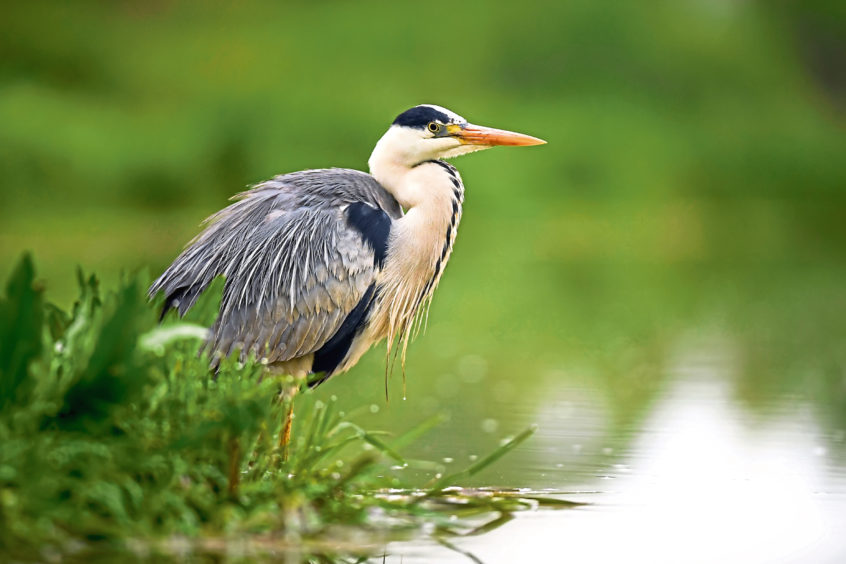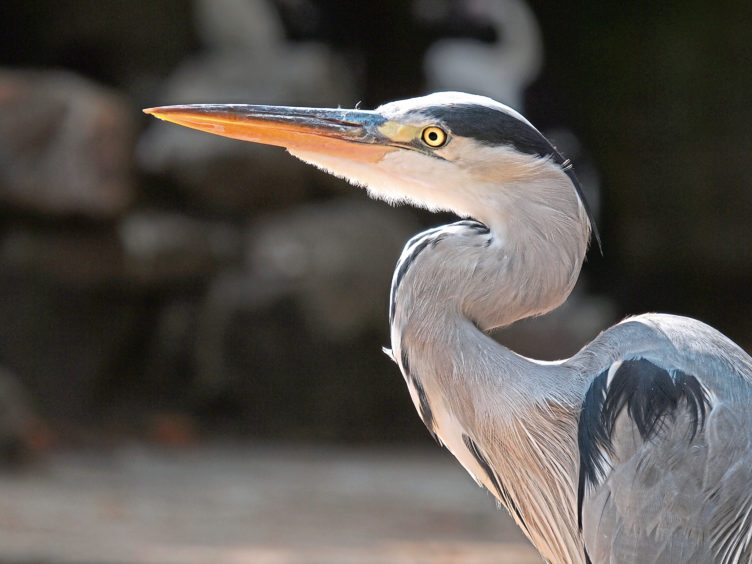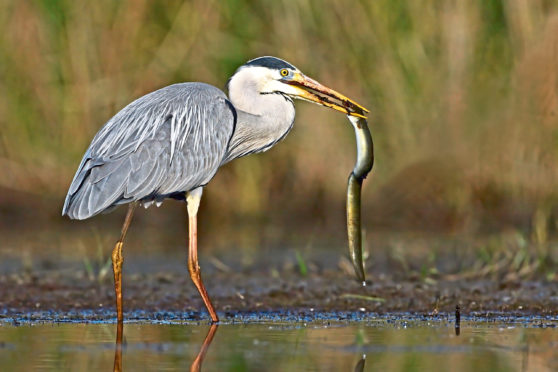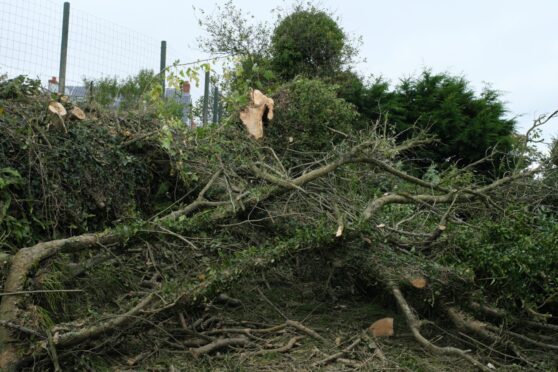As dusk took hold, the grey heron slowly prowled along the seaweed encrusted margin of this mirror-glassed Argyll sea loch; two careful steps, then a pause as it carefully scrutinised the water for movement.
Another couple of footfalls and its interest was suddenly aroused, with the eyes gazing downwards in rapt concentration. It had glimpsed a fish. The heron pulled its head backwards like a coiled spring, before the full force of its dagger beak was unleashed, plunging into the water, and deftly pulling out a small sea scorpion.
I found it astonishing how this heron could have spotted this camouflaged fish in the fading gloaming here at Loch Long, and then to have had the co-ordination to ensure its beak could grab it with the precision of a surgeon’s tweezers. The sea scorpion would also have been a tricky fish to handle, given its sharp spines, but this wasn’t a problem for the heron, who quickly swallowed it.
Herons are adept evening and night-time hunters, and on my local river, it is not uncommon to see herons fishing once darkness has descended. At this time of year, they often station themselves at the top of riffles to snap-up trout migrating upstream to spawn. In my village, wily herons often hunt the local burn aided by the illumination of nearby streetlights, and I suspect they will also take advantage of the soft lunar glow from the moon.

Loch Long is a spectacular expanse of water, a creeping tendril of sea that inundates deep into the heart of western Scotland. At its head, it is only separated by a few miles from the northern part of Loch Lomond. Nature spotting is very much a case of chance, and earlier that day two pilot whales had been spotted right at the top of the loch by Arrochar. Unfortunately, we missed seeing them by a matter of minutes. Frustrating, but that is the way of things when observing wildlife, and no doubt I will strike lucky with some other creature in the not too distant future.
My first inclination was that the pilot whales might have been disorientated, given that they were so far from the open sea, and thus, were in danger of beaching themselves. But the speed of their arrival and then departure suggests that they were following a large shoal of mackerel. Porpoises were also about, which would seem to confirm this was the case.

When these silver-flanked mackerel are on the move, a host of other predatory creatures will quickly seek them out. The mackerel stock in the north east Atlantic is doing well at the moment, and such piscine abundance is good news for fish-eating whales and porpoises.
I always enjoy watching porpoises, their dark bodies forward-rolling through the water in an easy and hypnotic motion. I especially adore their endearing nickname ‘puffing pig’, which refers to the sneeze-like sound made when breathing.
Info
Grey herons are adaptable birds, and as well as fish, will also prey upon frogs, field voles and young waterfowl. Worms and insects may also be taken.










